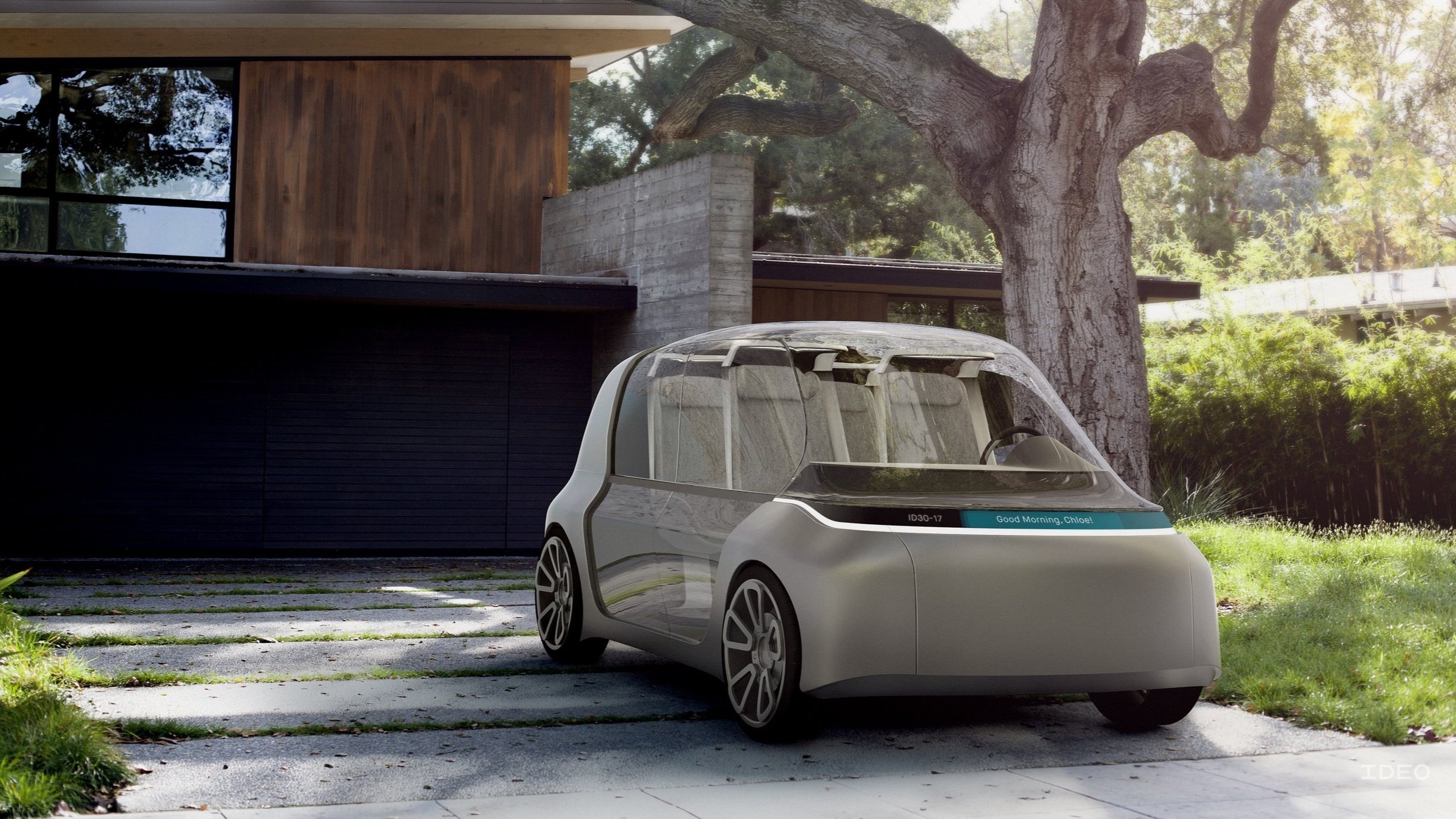Provoking Imagination and Attracting Like-Minded Collaborators
The Future of Automobility series was developed to spark meaningful discourse around the emergence of autonomous vehicles and their potential impact on society. Presented across four immersive chapters, the site explores future scenarios through photorealistic concept visualizations, spatial audio, and curated research that informed each vehicle’s design features. This thoughtful blend of storytelling and speculative design not only captured public imagination but also garnered widespread media attention, leading to numerous successful collaborations with forward-thinking clients across the mobility space.
Across four scenarios of moving people, goods, spaces and together, the Future of Automobility Series provide immersive visualizations of an autonomous mobility future that is now coming into focus.
Impact
This work attracted talent to IDEO by demonstrating the company’s commitment to deep craft and making time to create future vision work to attract like-minded collaborators. Visualizing and carrying out storytelling at higher levels of fidelity and integrating various disciplines within the creative process were specific aspects of the project brief.
The project content directly attracted new mobility clients, sparking many innovative collaborations and generating millions of dollars in revenue. Many clients were interested in and explored several aspects of the future outlined in the four chapters of the work as they applied to their business context.
The award-winning website presented an immersive way for visitors to experience possible mobility futures, and the project received awards and comprehensive media coverage.
Webby Winner
Websites and Mobile Sites Car Sites & Car Culture
People’s Voice Winner
Websites and Mobile Sites Car Sites & Car Culture
The Value of Looking Ahead: Automobility 10 Years Later
Designbivouac's "Future of Automobility" initiative envisioned the transformative potential of autonomous mobility. By crafting immersive narratives and conceptual designs, the project provided a tangible glimpse into how self-driving technology could redefine transportation, urban planning, and daily life. This forward-thinking approach helped stakeholders, from policymakers to the general public, grasp the implications and possibilities of a driverless future.
Fast forward to today, and the real-world advancements in autonomous mobility echo the foresight of Designbivouac's work. In the United States, Waymo, Alphabet's autonomous driving division, has emerged as a leader in the field of autonomous driving. In 2024 alone, Waymo's ride-hailing service, Waymo One, completed over 4 million fully autonomous rides across cities like Phoenix, San Francisco, Los Angeles, and Austin. The company now provides more than 200,000 paid passenger trips per week.
Meanwhile, in China, Baidu's Apollo Go has made significant strides. By January 2025, the service had surpassed 9 million cumulative autonomous rides, with over 1.1 million rides provided in the fourth quarter of 2024 alone—a 36% year-over-year increase. Apollo Go's expansion into cities like Wuhan, where it now operates approximately 6,000 driverless rides per day, highlights the rapid adoption and scalability of autonomous ride-hailing in China.
These milestones not only validate the visionary concepts presented by Designbivouac but also highlight the global momentum towards embracing autonomous mobility. The convergence of innovative design thinking and technological advancement is ushering in a new era of transportation, reshaping how people move and interact within urban environments.
“In 2024 alone, Waymo’s ride-hailing service, Waymo One, completed over 4 million fully autonomous rides across cities like Phoenix, San Francisco, Los Angeles, and Austin. The company now provides more than 200,000 paid passenger trips each week .”
Related News
Mercedes-Benz Testing New Autonomous Control Lighting Scheme
Mercedes-Benz is introducing a distinctive new lighting signature to signal transitions between manual and autonomous driving modes. While not directly linked through project work, the Future of Automobility Series explored a similar approach for vehicles to communicate their driving state. A turquoise illumination will be activated across key exterior touchpoints—including the front light housing, side mirror elements, and rear lighting cluster—to indicate when the vehicle is operating autonomously clearly. This lighting system will begin appearing on test vehicles in California over the next two years as part of real-world validation efforts. Notably, the state of Nevada has approved the use of this lighting for production vehicles, with implementation set to begin on the 2026 EQS sedan and S-Class models.
The Future of Automobility Series extensively explored a similar approach to conveying a vehicle's state.
Mercedes-Benz Drive Pilot vehicle with turquoise lighting indicating when the vehicle is in autonomous driving mode.
Front autonomous mode indicator lights.
Rear autonomous mode indicator lighting.



















































